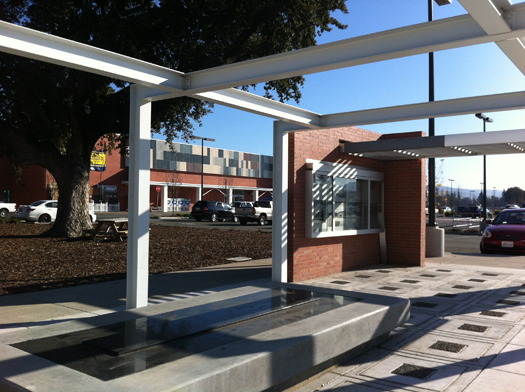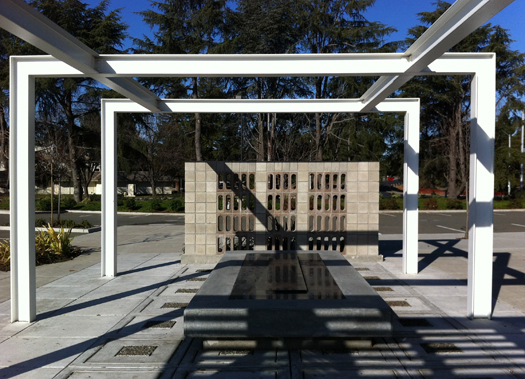
I spent last week in the Bay Area, researching a story on the urbanism of high-tech campuses and eating lots of free corporate food. As part of my travels, I visited the site of what may have been the first building in Silicon Valley, IBM Building 25 in San Jose, CA. Building 25, built in 1957 and designed by John Bolles (best known today as the architect of Candlestick Park), was the first pixellated box in what became a vast field of patterned boxes, both at IBM and beyond, up and down highways 101 and 280.
Building 25's foremost contribution to computing history was the invention of the "flying head" disc drive, that allowed for online processing. This hard disc memory was deployed in the IBM 305 RAMAC computer, a room-size installation that looked not unlike the boxy buildings in which it was researched, developed and manufactured. Given the importance of memory in the history of Silicon Valley, it seems doubly, maybe triply, ironic that so many elements of Building 25's story have been forgotten. Not the least is any association with the acronym "RAMAC": part of the IBM site has been turned into a public park named after the 305 computer. When I tweeted a photo of the RAMAC Park sign last week with the tag, "Only in Silicon Valley," I confused a lot of people.
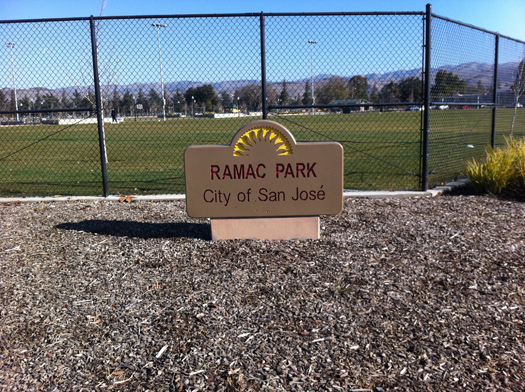
Reading accounts of contemporary tech headquarters, one might thing that the new owners (or, more often, leasors) invented the covered walkways, the central open spaces, the mathematically-themed sculptures one sees outside. Or inside, the daylit open plan offices, the easy flow between interior and exterior. The outside of Bolles's box looks similar to a number of other, more famous IBM buildings of the era, particularly Eero Saarinen's wafer-thin, blue-on-blue curtain wall in Rochester, MN (1957), but Saarinen couldn't offer the Minnesotans California's year-round climate. Eliot Noyes, then serving as IBM's "curator of corporate character" presided over a country-wide building program that played, more and less explicitly, with the language of punchcards and screens. Bolles's facade was slightly more subtle than Noyes's own Los Angeles Aerospace Headquarters (1962).
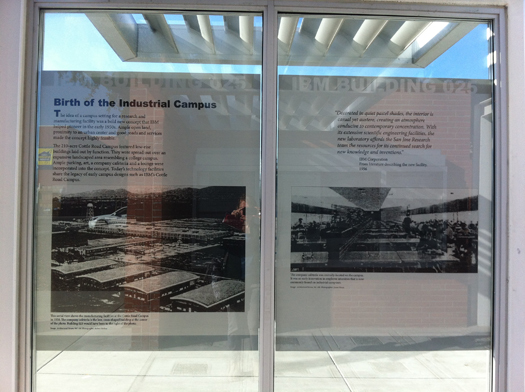
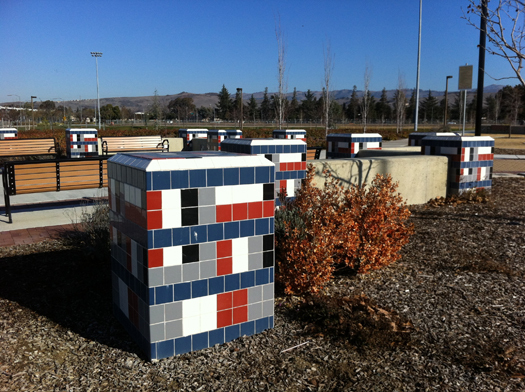
When IBM San Jose was built, the land around it was relatively undeveloped; now it is embedded in a suburban single-story sea. Subsequent IBM campuses at Almaden and Santa Teresa were built higher in the hills. In 2002, IBM no longer needed the site, and sold part of it to Lowe's Home Improvement, part of it to Hitachi Global Storage. Lowe's planned to demolish Building 25 and to build a new store; during the Environmental Impact Report, the new owners found that Building 25 warranted preservation. After years of back-and-forth, including a lawsuit by the Preservation Action Council of San Jose, Lowe's had agreed to preserve the building, or elements thereof, as part of its new retail site. Then, in 2008, Building 25 burned down.
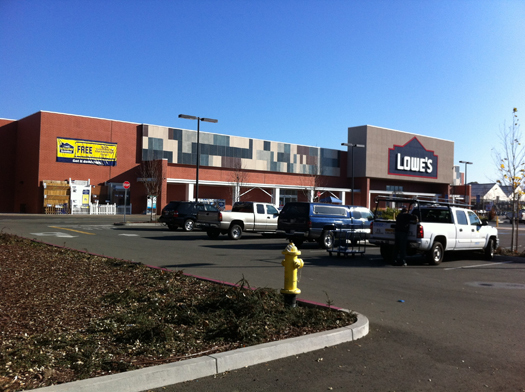
Lowe's agreed to honor the agreement by incorporating visual elements from Building 25 and its neighbors, namely those pixellated tiles, and by building a memorial to Building 25. The first part of this deal turns out to have been a very bad idea. A Lowe's dressed in dun-colored tiles is still a Lowe's, and the little peaked roof over the automatic doors negates any modernist lightness the pattern might bring. One of the striking elements of IBM San Jose was its low, flat roofs and exterior walkways, which managed to nod to the ubiquitous carport without losing pedestrian scale. Lowe's just looms, and the tiles offer no slimming effect.

The second part, the memorial to the building where they created memory, is much nicer than it has any right to be. Light, elegant and informative, a model silk purse out of a sow's ear. Reusing the original building or buildings, even as clubhouses for the bright and shiny new park, would have been better. But the memorial, set on its own concrete pad next to a single original tree, physically recalls the original's steel trellis and concrete-block screen, its axial symmetry and its sharp edges. Historical panels neatly summarize the project at mutiple scales, from the origin of Silicon Valley and the tech campus, to the contributions of IBM art consultant Robert Holdeman. I have no idea if anyone ever picnics under the tree, or bothers to read the signs, but they are impressive. And the memorial itself is a lovely piece of architecture, one that could easily memorialize a number of other things.
IBM references remain in other places: the tile bases on the historicist lampposts at the park attempt more pixellation, the streets around what is now Hitachi are named for some of IBM's other American locations, Endicott, Charlotte, Poughkeepsie. Building 25 was always just a cog, a bit, or a disc in IBM's master plan. They didn't see it as a place to remember, but it's lucky the preservationists of San Jose did.
